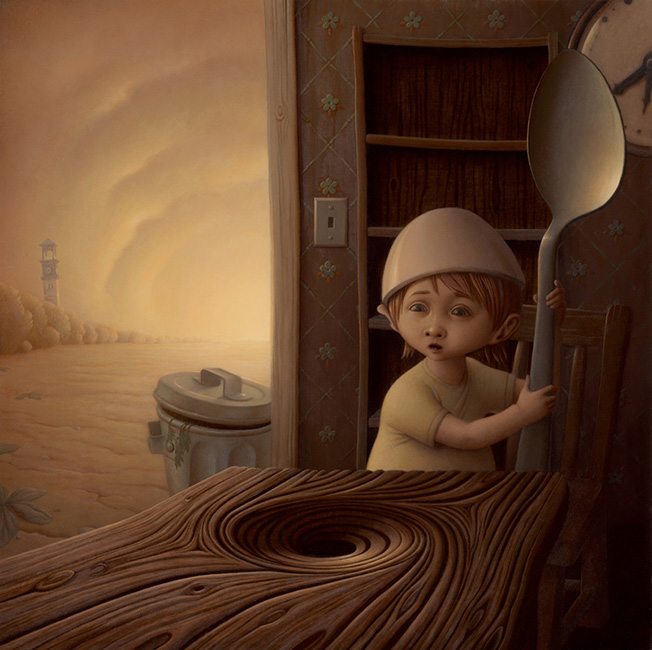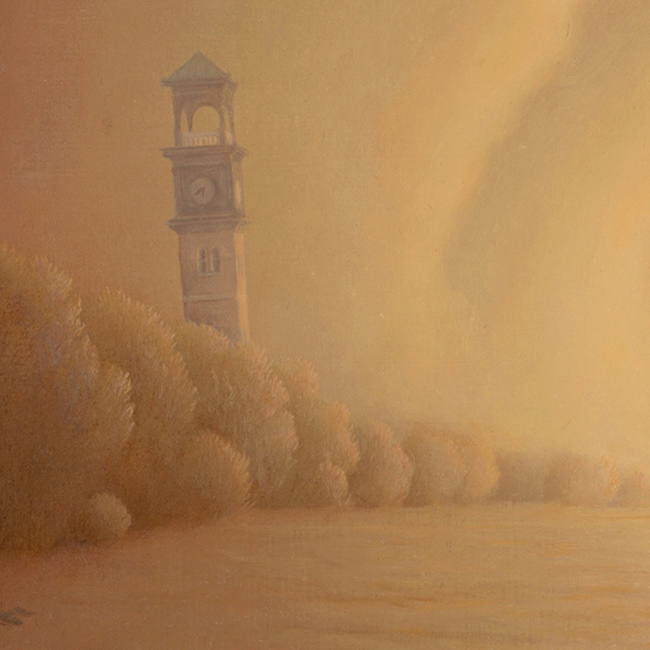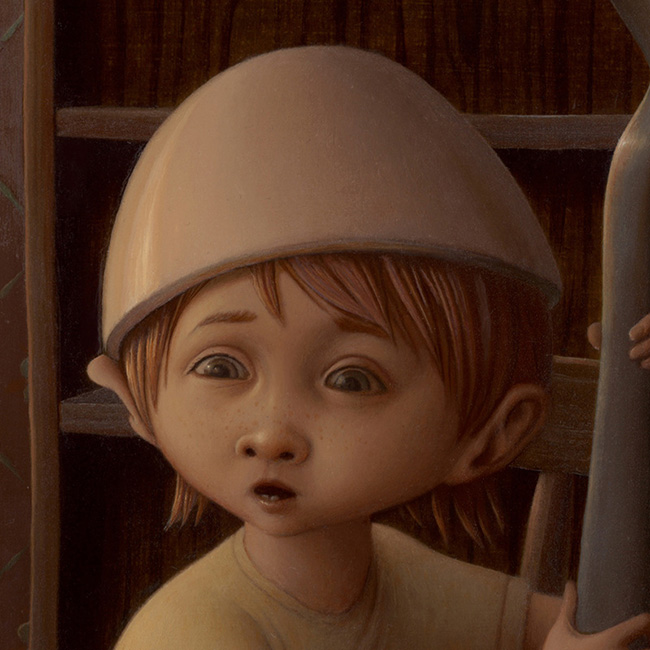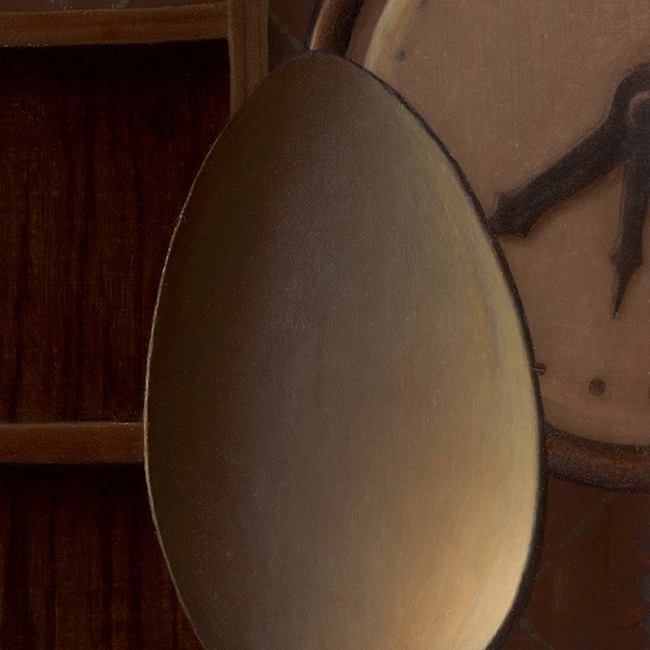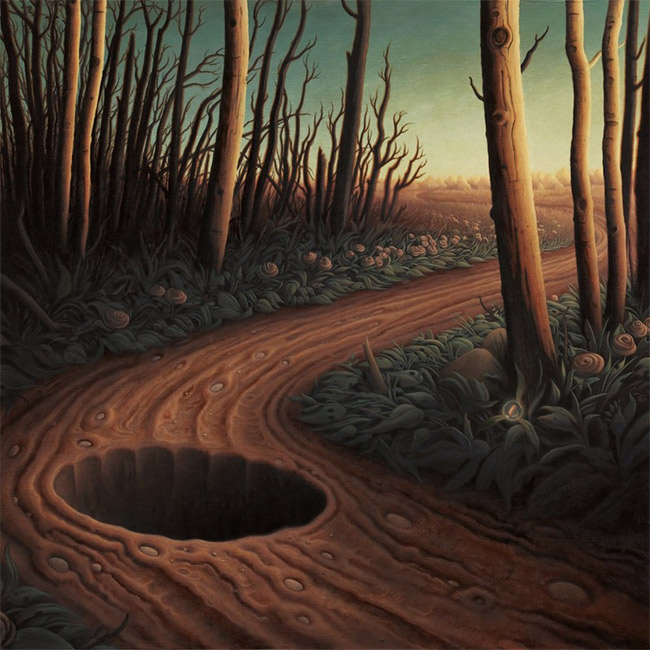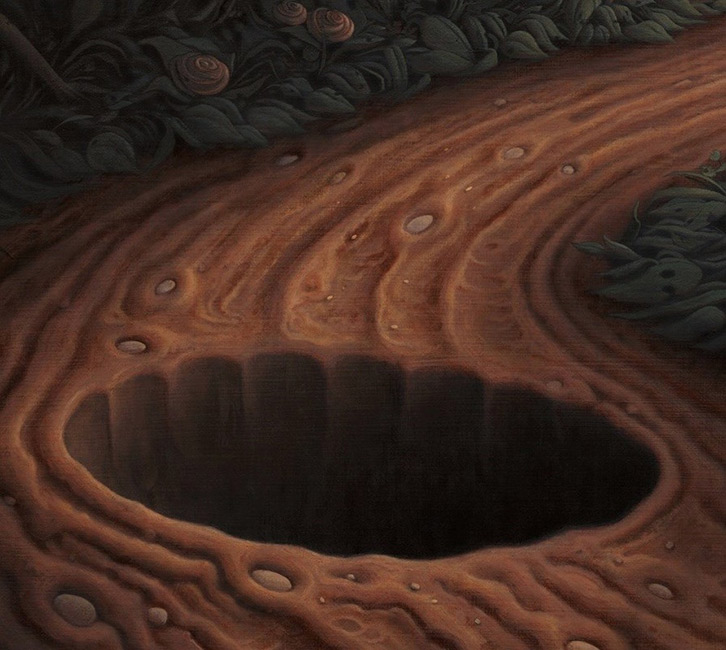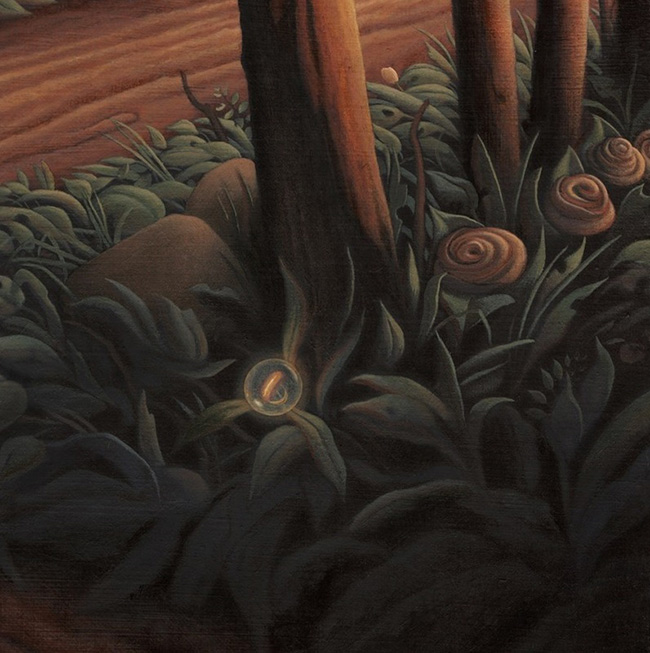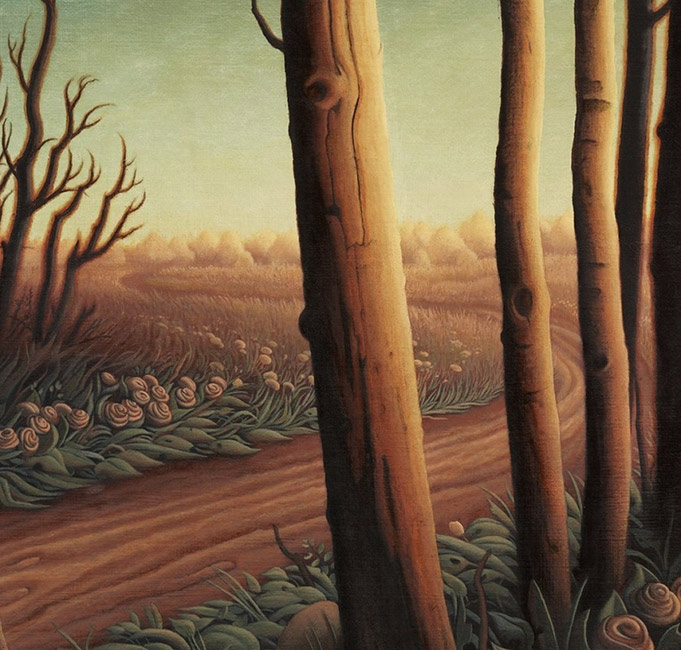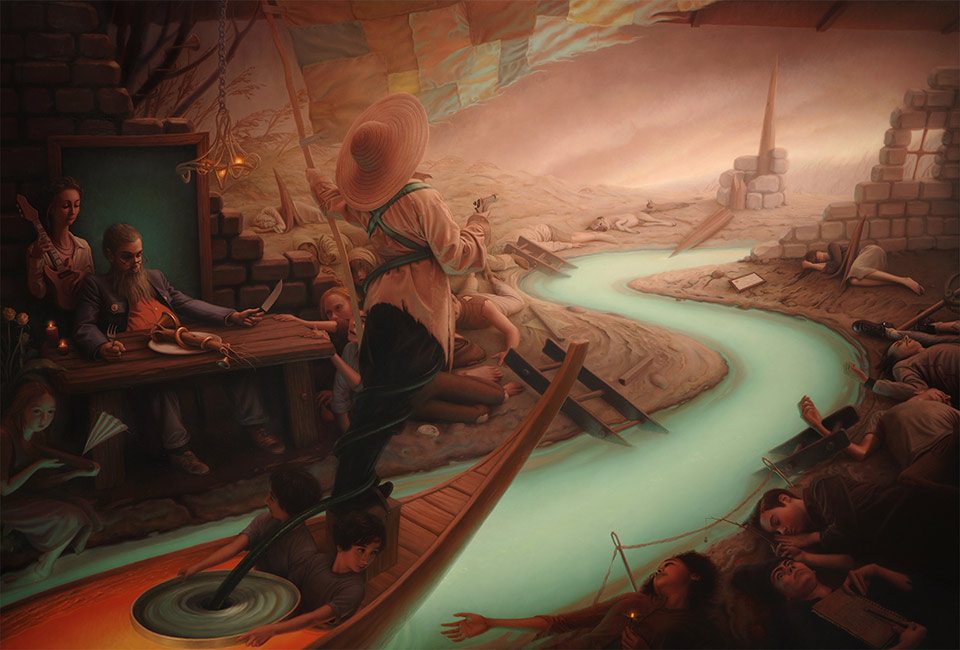The captivating imagery of artist Steve Chmilar stems from a purely distilled source of inspiration, one which derives from a finely tuned mental state far removed from self- conscious thought and the perilous ego. Combining his love for the innovation and aesthetics of the great masters of the Flemish Renaissance, with an unwavering desire to communicate through his own unique artistic voice, Chmilar paints lavish and technically impressive narratives, allegorical in nature and timeless in appearance, that reflect our own contemporary era back at us from a distinctive perspective. Chmilar masterfully employs his delicious knack for weaving threads of mystery and ambiguity throughout the proceedings and distributing just enough clues to have us pondering his intentions and engaging in the deciphering of his hopes and concerns for humanity, along with his musings on the multitude of characteristics that contribute to the wonders of the human condition.
Steve Chmilar was born in Grande Prairie, Alberta, Canada on December 25, 1979. While living in Calgary from 2000-2008, he played music professionally and won a national songwriting contest in the spring of 2006 at CMW in Toronto. He lived in Victoria from 2008 until 2012 where he painted and performed as a solo musician.A career shift to full-time visual artist was made after the success of his first show in November of 2011. Since moving to Toronto in the spring of 2012, Steve won ‘best in show’ at the Toronto Outdoor Art Exhibit and has continued selling his work independently.
WOW x WOW caught up with the mega talented Mr. Chmilar as he was putting the finishing touches to some amazing new work for his upcoming exhibit, which opens on Friday, June 23rd at Hashtag Gallery in Toronto. Be sure to check it out and in the meantime enjoy the following interview.
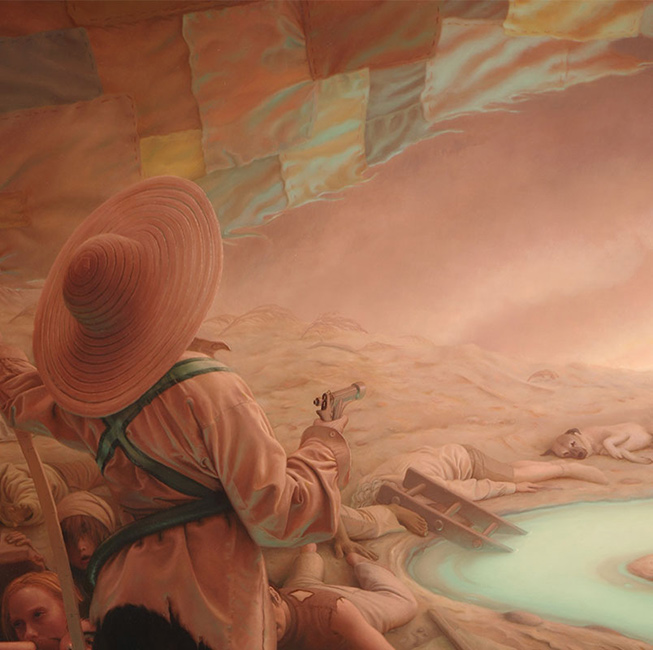
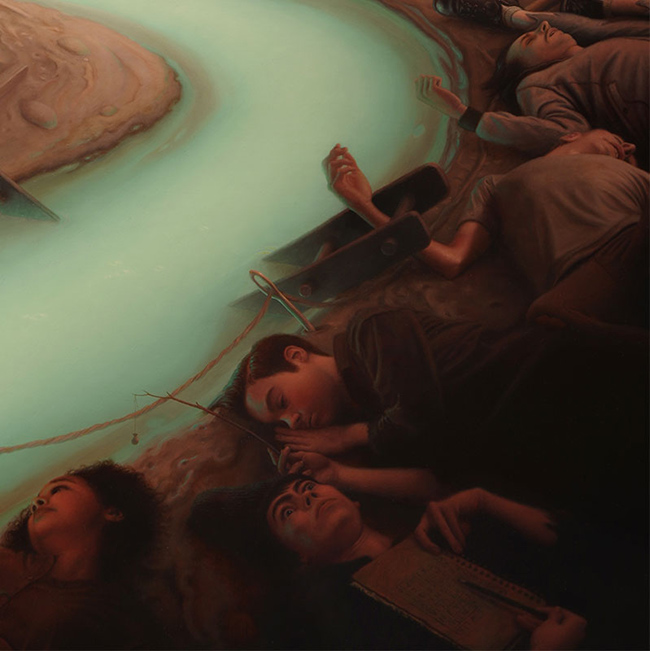
Hi Steve! Thanks ever so much for freeing up some of your valuable time to have this wee chat with us, we really appreciate it. To start us off, if you would please introduce yourself, touching on anything you feel relevant to story of Steve Chmilar the artist?
First off, thank you for the opportunity and for creating a community online that enriches the art world.
I grew up on a farm in northern Alberta outside of a town called Grande Prairie. My family is a ‘salt of the earth’ group of blue-collar type folk. If ‘role theory’ is accurate, it would be easy to predict that a third born child with asthma (that made it difficult to help with chores that involved grain dust) would become an artist. I’ve always done the opposite of what my environment suggested, so it all makes sense being that there are no artists in my immediate family. I drew all the time as a kid and got to spend a lot of time surrounded by poplar trees and large prairie skies. I look forward to spending more time amongst other types of trees in the future.
I started playing guitar at the age of thirteen and pursued the dream of rock stardom through my teen years into my twenties. Roughly a decade of practicing scales, writing songs and hustling for gigs postponed my ‘official entry’ into the art world. I began painting seriously in about 2008 but did not have any shows until the end of 2011.
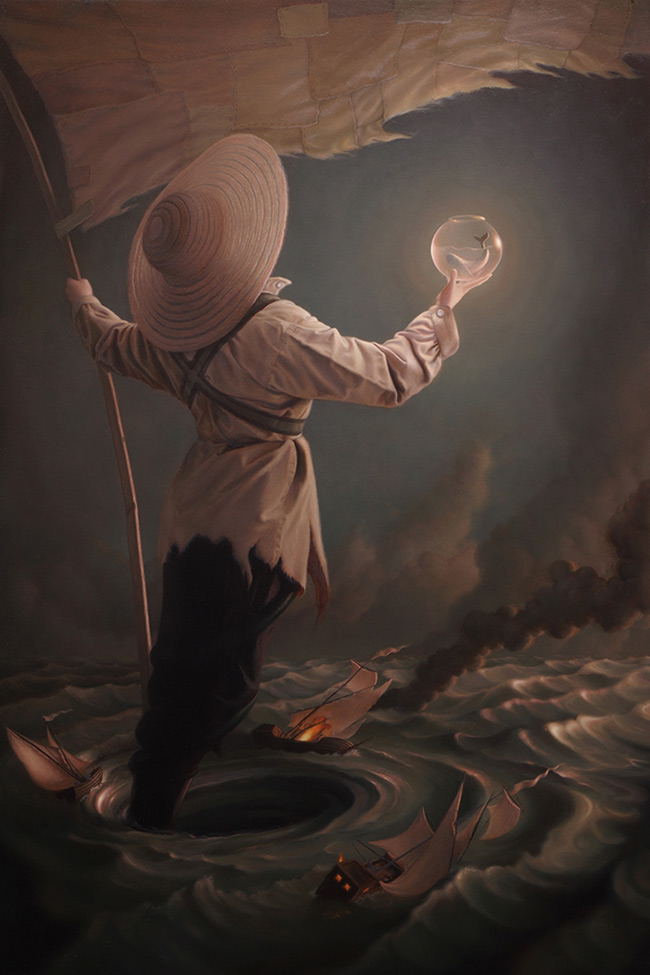
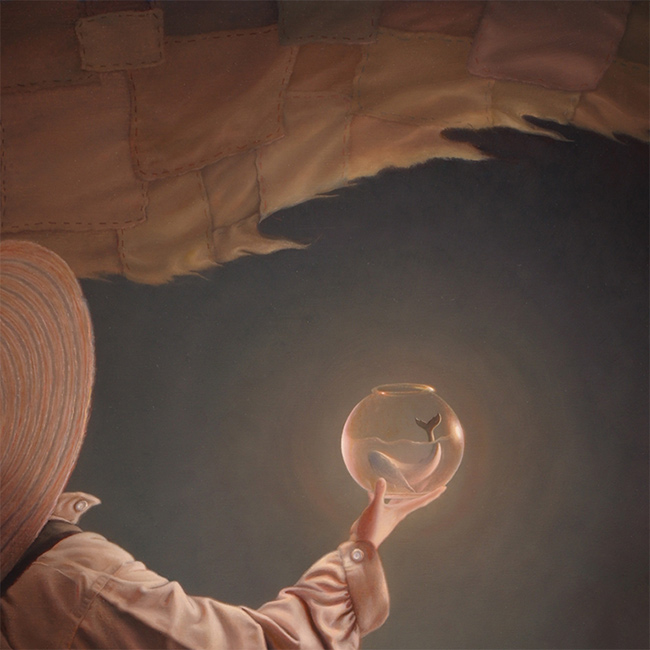
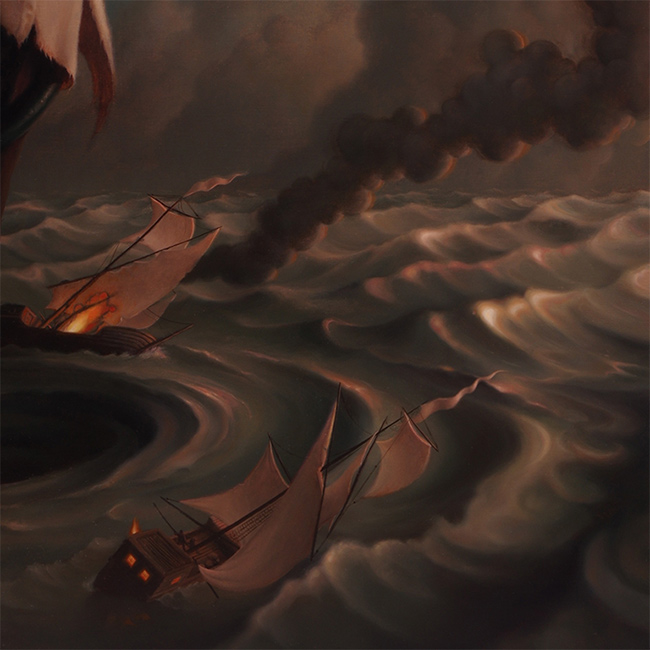
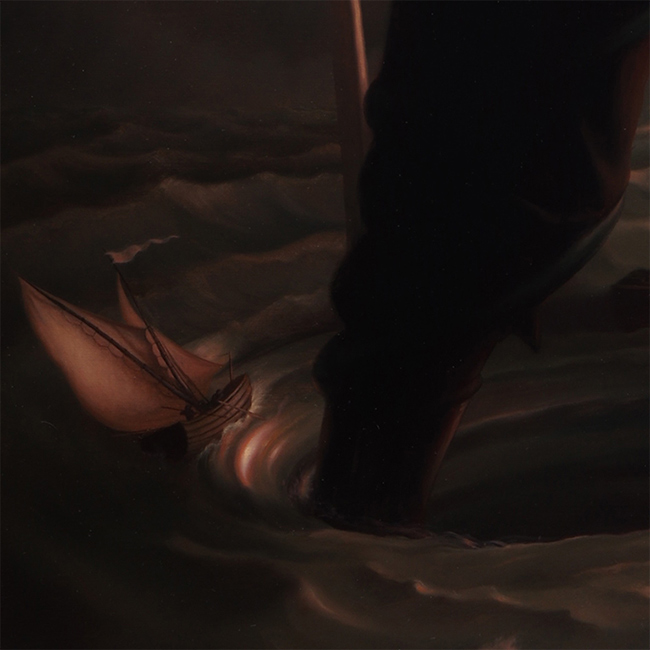
Before we get into some great chat about your paintings, it would be remiss not to touch on your experiences and achievements as a musician. So please feel free to tell us as little or as much about those as you wish?
Well, rock-star did seem like the best job description ever, but you’ll have to believe me, I really did play for the love of music. I’m very all or nothing with my pursuits. When my mother gave me a Sears catalogue guitar I practiced constantly. I wanted to become an Yngwie Malmsteen / Ultimate Warrior hybrid and inject the world with massive blasts of hard rock kick-assity (academic term).
I spent from about 2001 to 2011, hanging out in pubs, playing original and cover songs for a living for the most part. I played with a band until 2007. When my band members did not want to play cover gigs anymore, I taught myself to play drums with my feet while playing guitar and singing to continue paying my rent in artistic fashion. I feel lucky to have had that lifestyle. I learned a lot about the reality of making a living in an artistic business. When I decided to pursue visual art full-time, I had no delusions about how tricky it would be. I knew that I would have to work double-overtime every day to make it happen.
Music did not come as naturally to me as drawing because I started drawing way before I started learning ‘Ode to Joy’ and ‘Yankee Doodle’ on guitar. I took my drawing experience for granted and did not appreciate it because I assumed everything had to be a massive struggle in order to mean something. The blue-collar farm kid background taught me to work hard and so I practiced scales to a metronome for hours, took voice lessons and did warm-ups every day. I eventually learned that no matter how much I practiced music, it would never come as natural to me as drawing.
I choose not to live with any regrets, but I am working hard at art nowadays to kind of ‘make up’ for not starting to build a name for myself in art until recently. If I did not have the opportunity to play music, I might have been almost a decade further into my art career by now… but I digress from that thought process. It is low frequency thinking.
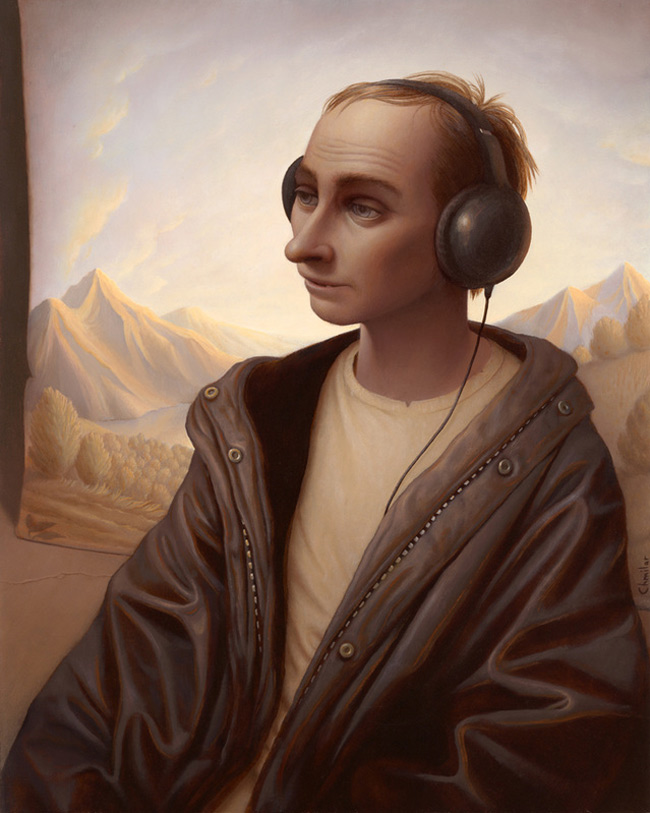
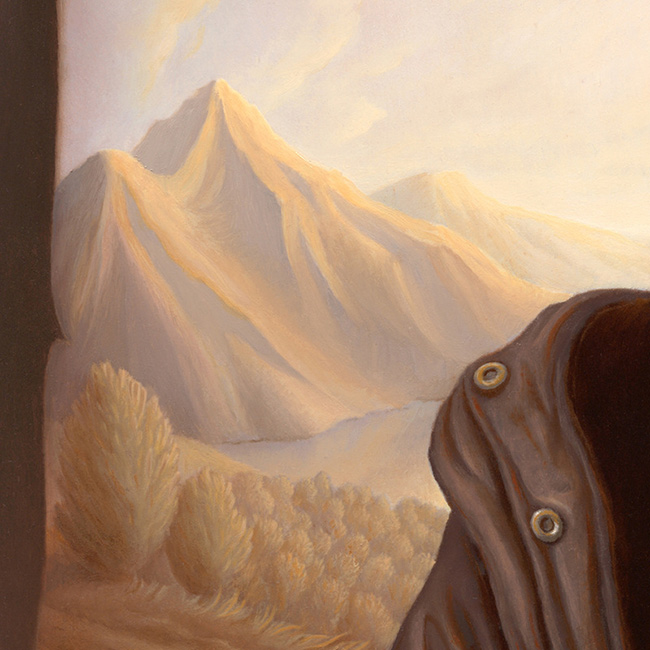
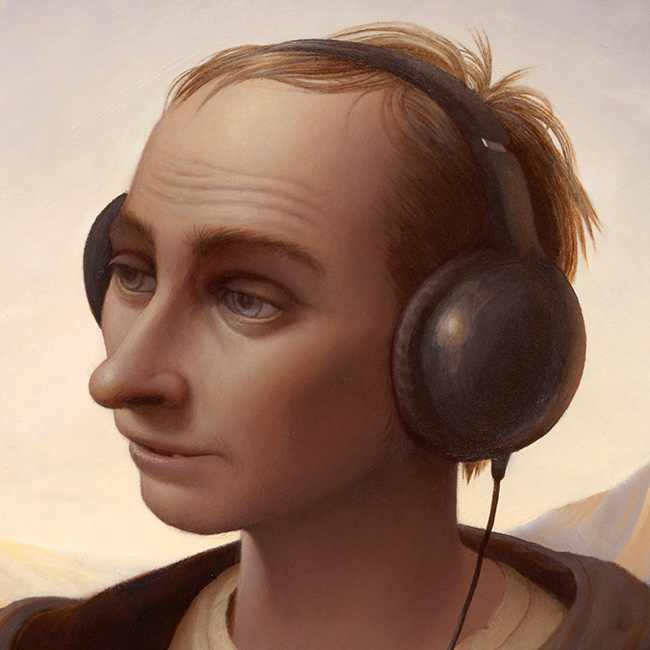
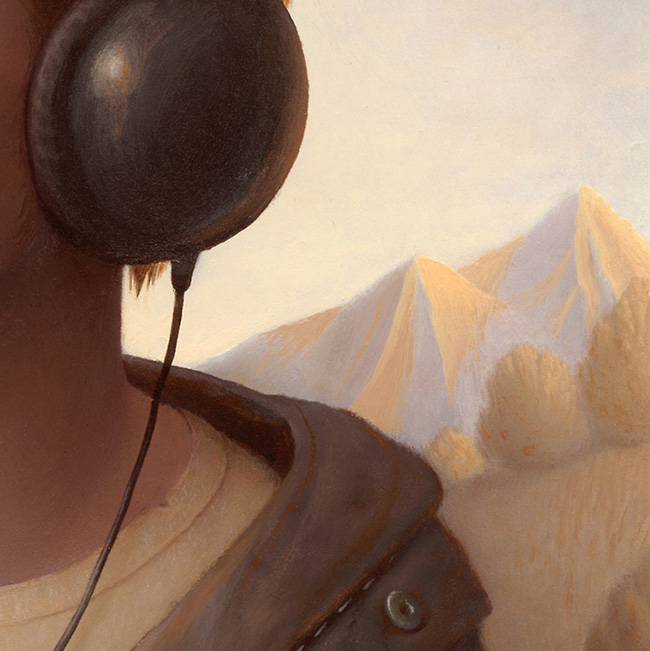
How do you approach the creative process? Talk us through how you construct a painting. Do you have a concrete idea of what it will look like before you get started? What type of reference do you use?
It kind of depends. Sometimes I have flashes of almost fully completed images, especially when I close my eyes for a length of time. In these flashes, I only have a general sense of composition and detail, but a bit more specific idea of the colour, and an extremely specific and potent sense of the feeling. I strive to keep that feeling throughout the developmental preliminary work.
Sometimes I start with tiny postage-stamp-size-sketches. From a distance, composition means everything to me. The idea has to pull me into it from afar before I know any details of the content. Once I fall in love with the gist of a composition, I make a slightly larger drawing (maybe 6 x 8 inches) and figure out what those dark and light areas are all about, all the while developing a narrative that is meaningful to me.
My process has been advancing in the last months and years, so I can’t say what I haven’t done yet, but only what I had in previous pieces. I used to not use references very much but have started to in the last few paintings. I’ve learned that the more time I put into preliminary work the better. I’ve wasted a lot of time in the past painting something that wasn’t working, only to take the paint off and start again at midnight – staying up until 4am. In short, my process can seem like a lot of work but it has been educational to take the long route with preparation. The more I learn about light along the way, the better.
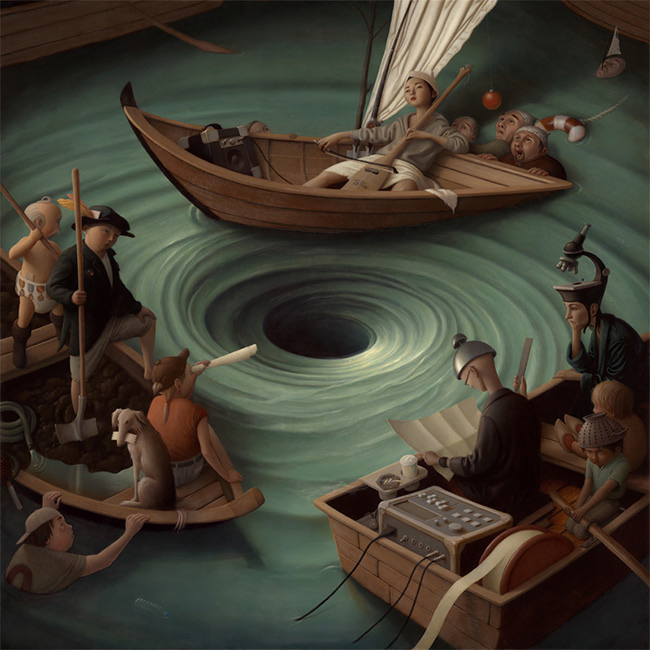
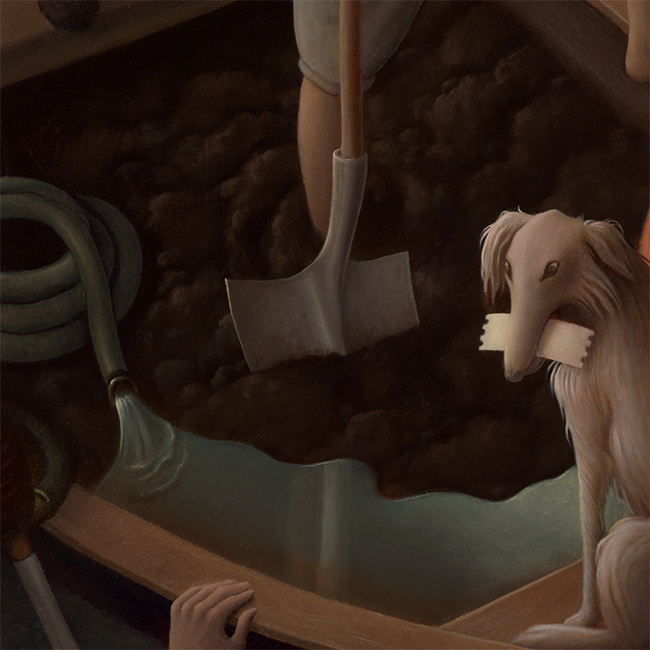
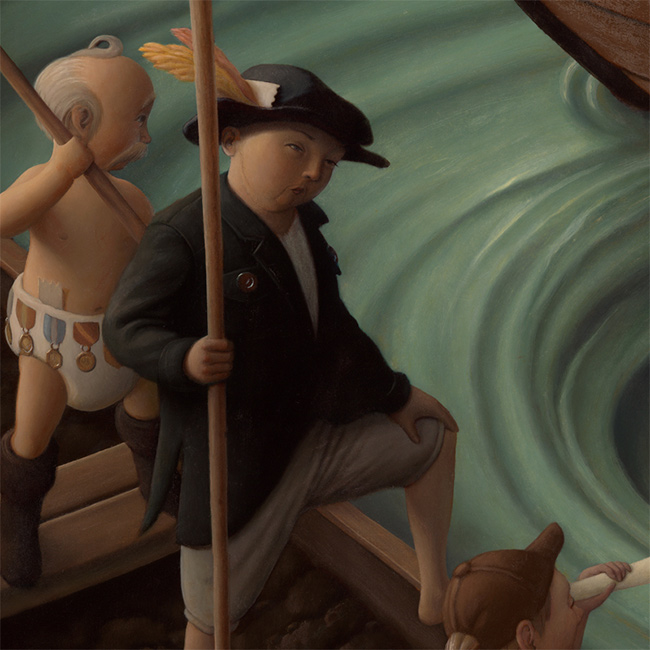
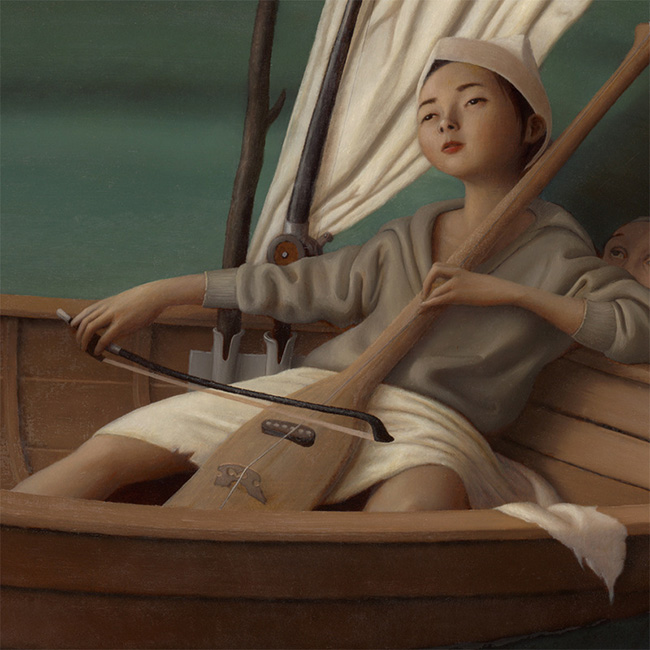
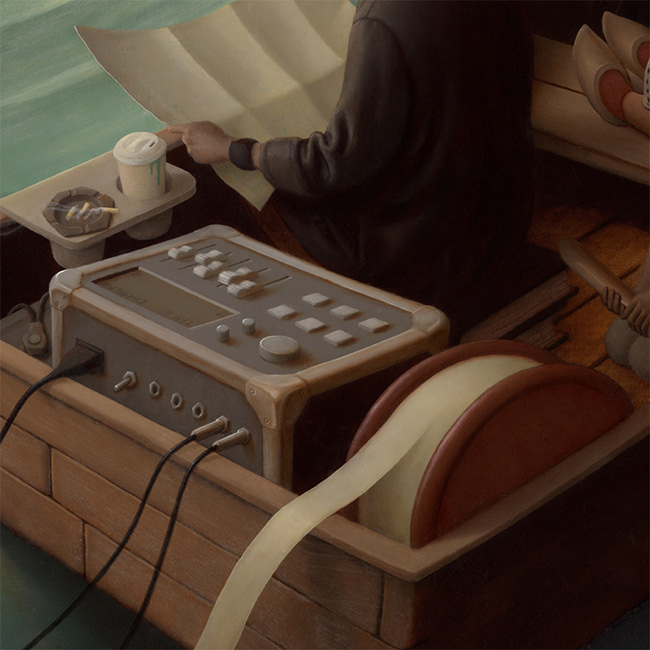
There is such a wonderful sense of mystery about your imagery. What do you hope that the viewer takes from your work?
Oh boy, that’s a huge question. In short: that art represents a human being’s closest approximation and connection to the infinite… or put another way, that what they are staring at is more than just a wood panel with pigment rubbed onto it.
You have cited Pieter Bruegel as one of your main influences and there is definitely a distinct flavour of the Netherlandish Renaissance about your work. Please talk about your love for Bruegel and some of the inspirations you have taken from his era of painting?
I imagine that so many painters have been influenced by Bruegel and Bosch. It is fascinating to see how many different ways that influence has branched off.
With Bruegel and especially Bosch, I think they were some of the first artists to really invent their own way to do whatever the hell they wanted within a prescribed sense of meaning – via religious assignments. There was a sense of play in their inventive compositions which is a timeless quality of any great art. There is also a sense that Bruegel had to have been a philosophical thinker who would have been interesting to talk to. Language barrier and time travel paradox aside, he would be my first choice to have a beer with.
It takes a huge sense of purpose for an artist to spend so much time making art. Today, we have to create our own meaning, our own purpose, and then get to work. In those times, living conditions were much worse than today, but in some sense, the artistic goals were clearer. Not that I would want it that way, but today in the west we all live like kings in terms of our access to indoor plumbing, so it makes art more possible if one can shake off the paradox of choice that surrounds us. Limitation is a creator’s gift. Bruegel was a creator, an inventor who saw the world from a unique vantage point.
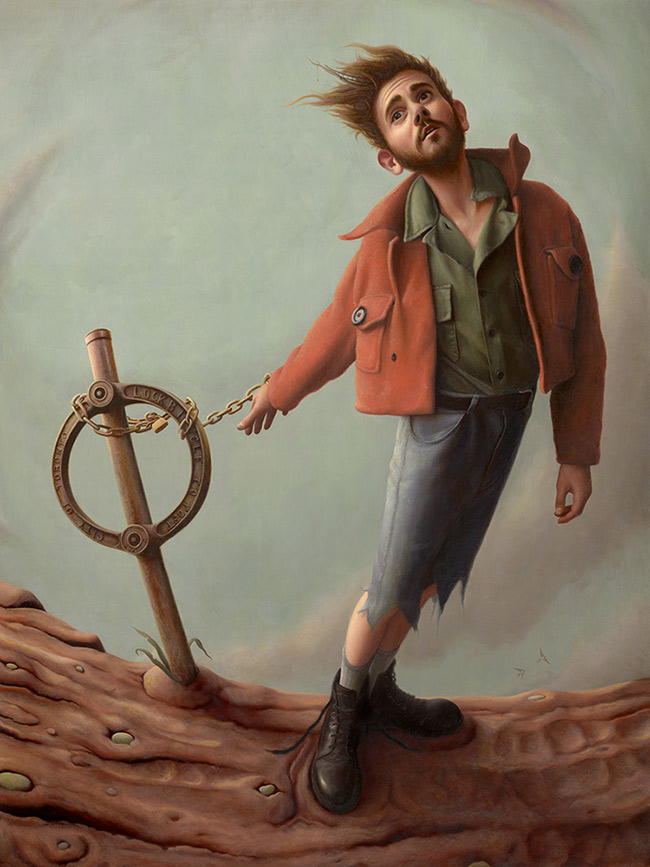
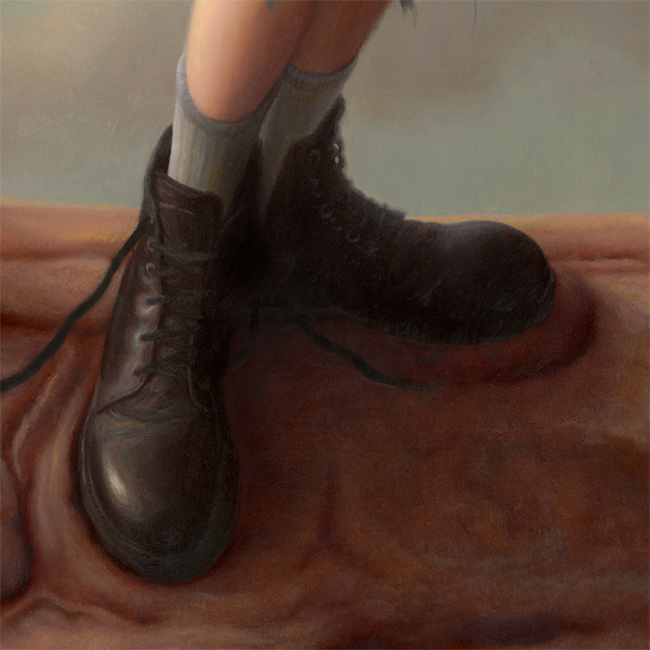
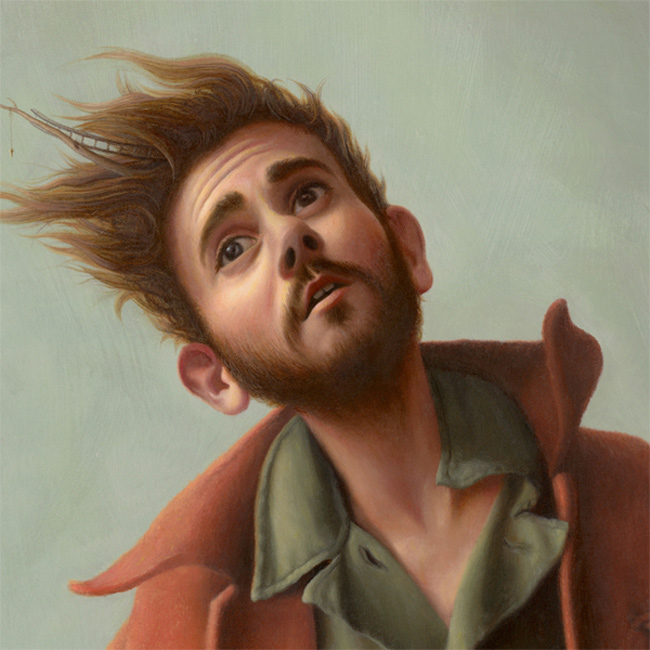
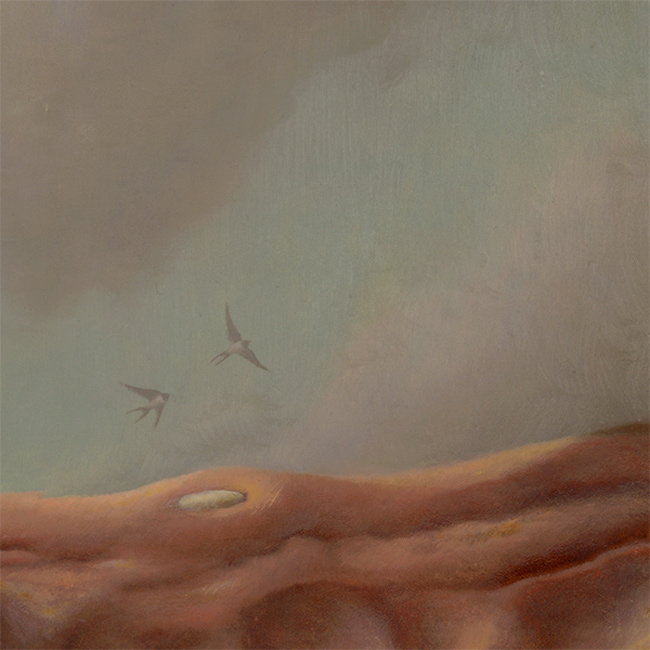
The figures and scenes you depict in your work are set in an unidentifiable time period, as you incorporate signifiers from differing eras. Whether it be the peasant clothing fashions from the Renaissance or some of the technological artefacts from more contemporary times. What are your thoughts when it comes to this aspect of your art?
That is still in development and perhaps always will be. My intention has never been to create a sort of ‘neo – Flemish/early Renaissance’ style to try and trick people into thinking it was authentically old. I know that my earliest work especially reflects this, but that is a very conscious part of my artistic development. I imagine that most representational painters who are influenced by old masters go through similar challenges in developing their own unique aesthetic, finding ways to be less derivative.
All of this is why I believe that today is such a great time period for these styles of painting. The possibilities are infinite if an artist’s mindset is operating at the appropriate frequency (by frequency I am eluding to a flow state or ‘the zone’: a positive, open mind that is unapologetically personal while celebrating its own idiosyncrasies). Another way to think of this mindset would be like a conduit – tuned into an infinite well spring – or the absence of self-conscious creative processes that look to appease an illusory idea of what people will approve of or of what is most likely to sell. I have been feeling the ‘frequency’ more and more lately. Stay tuned, as my work in progress will continue to show this development.
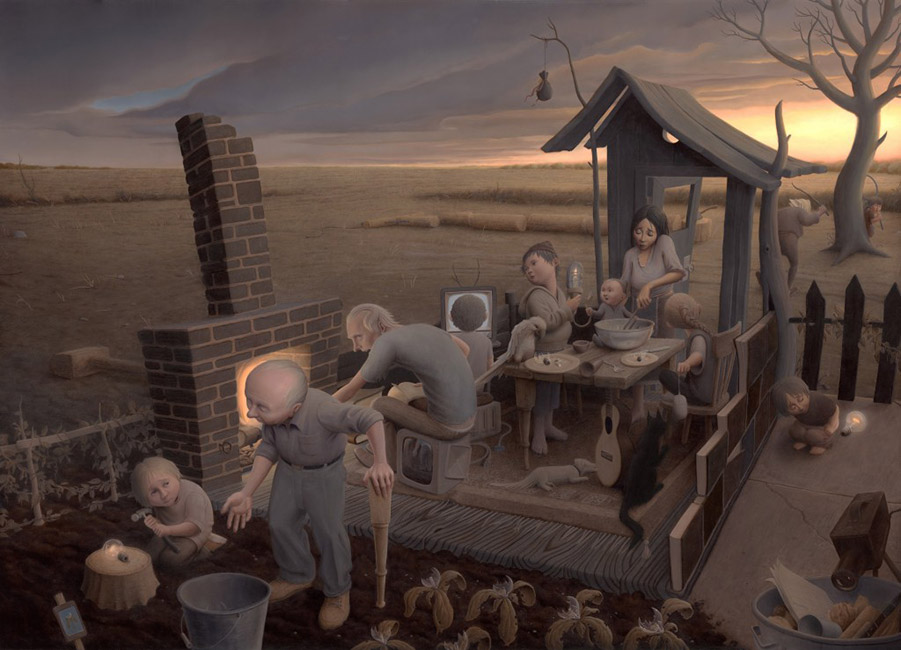
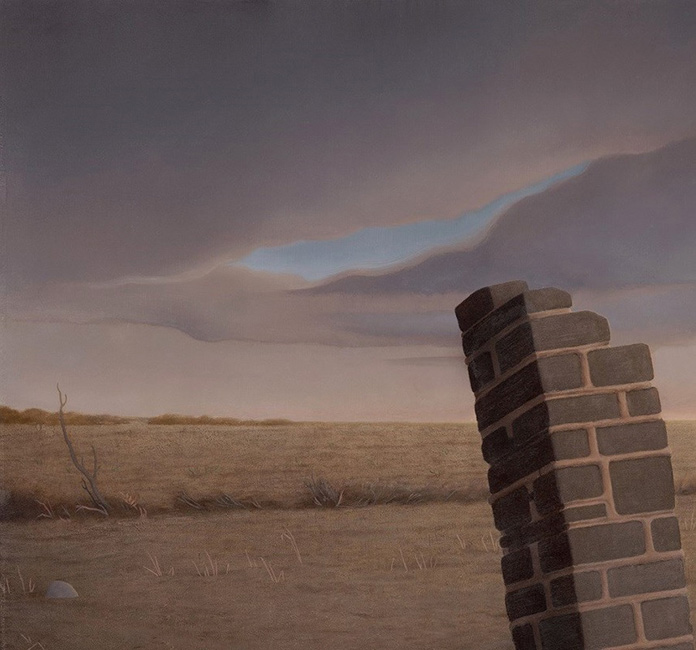
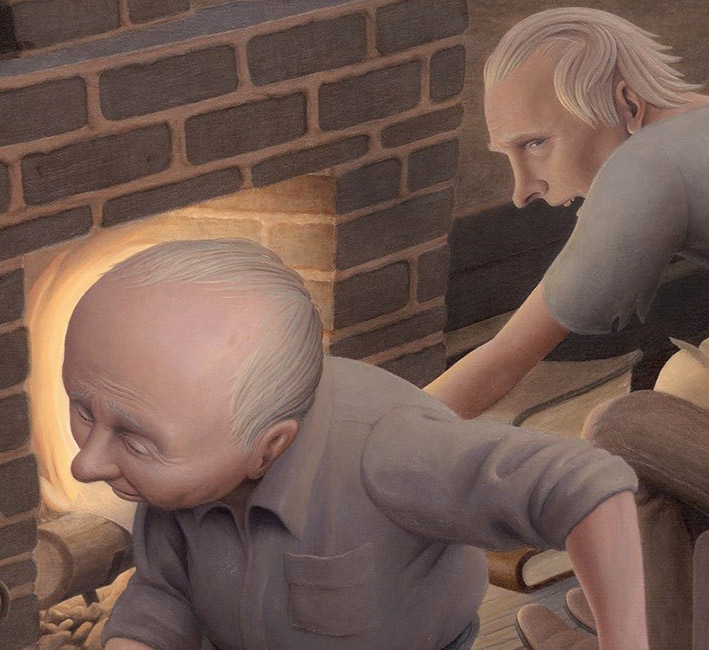
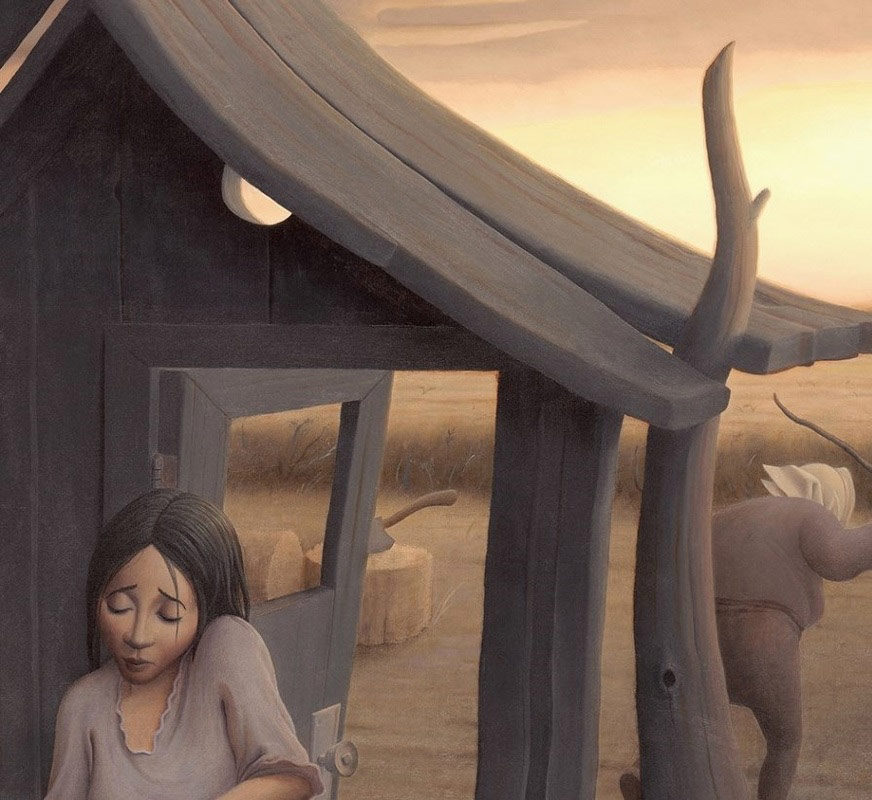
Storytelling and narrative are at the heart of your creative process. In your opinion, what are some of the most important ingredients that go into making a successful and compelling visual narrative?
I’m embarrassed to say that it’s taken me so long to realize that first and foremost, art only has aesthetics (as far as they can be perceived by a particular viewer). For the sake of my example, the opposite might be political art where someone is trying to hit with a hammer. The more questions the narrative asks without answering, the longer the viewer can look and wonder, yet if there is nothing deeper within it, it will come across as novelty, which I would define as a clever idea that wouldn’t have had to be painted in full colour and detail to get its point across. Albeit, the viewer may only perceive these things on a subconscious level.
A tricky thing is, the representational artist has to deal with the associations that people predictably make. Don’t get me wrong, I think political statements are incredibly valuable but that is why no art piece can possess all things at once. What it loses in one way it gains in another. The spaces between obvious meanings and thought provoking ambiguity is small and therefore difficult to achieve. The more an artist wants to show, the more they risk showing too much and that is the beautiful contradiction. For these reasons and more, I think that ‘good’ representational narrative painting is very challenging. It is good that this genre exists out of the ‘fashionable art establishment lime light’ because that is the most sustainable place to remain.
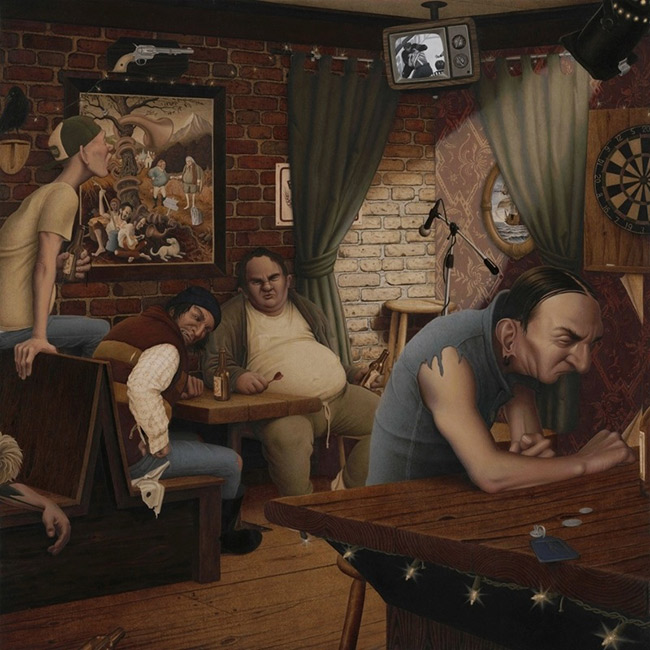
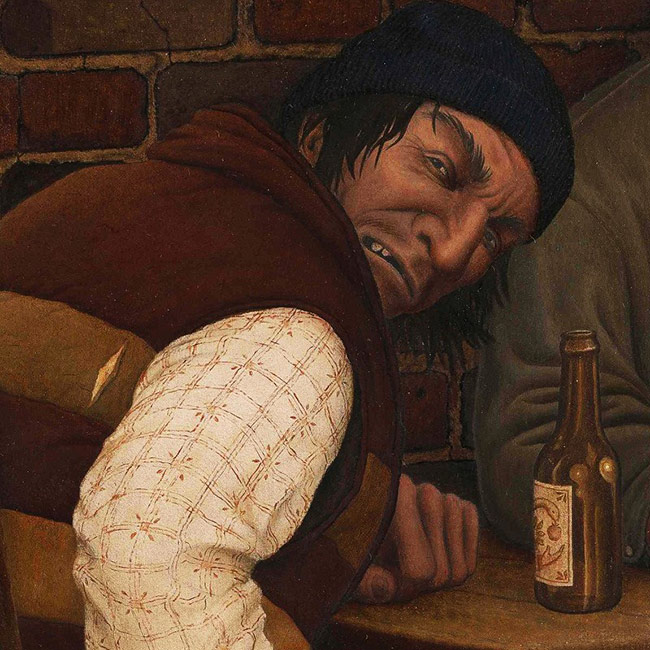
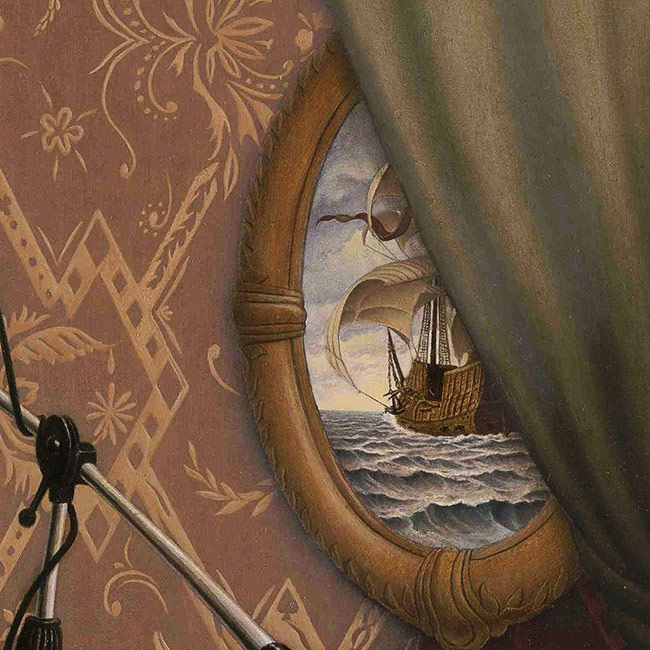
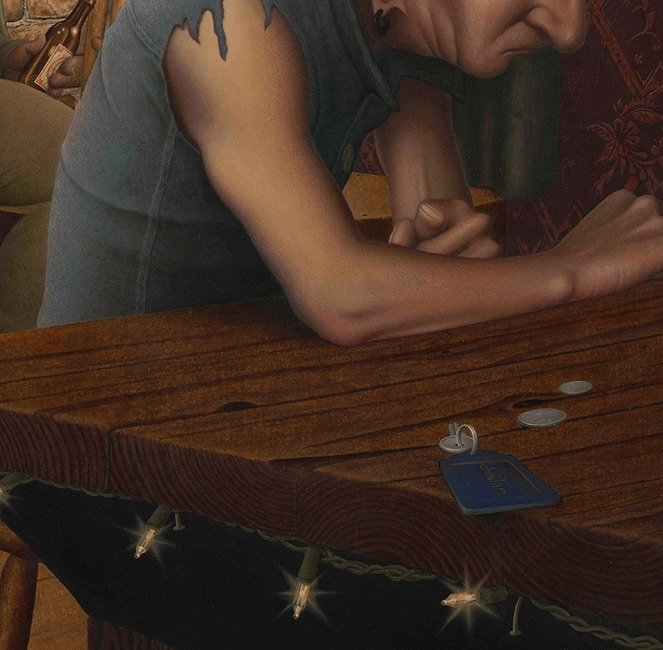
There is a high level of technical skill in evidence in your technique. As an artist who has had no real formal training to speak of, what have been the most beneficial sources of learning for you and also the most important keystones in your development?
Thank you, I take that as a compliment. Everyone knows there is so much information available to us today. That is why two things have happened: on the one hand, opportunists can thrive because there is so much info and resources available at arm’s reach. On the other hand, nihilist types might be overwhelmed (on the inside but blasé on the outside) by the paradox of choice and end up doing nothing.
In terms of formal training, one only has to do a quick search on Youtube to find many ‘art talk’ videos, where people are really starting to question the value of a giant student loan to acquire a BFA or MFA. Many artists I know of who are having success have no degree.
I stand on a podium wearing a gold feather cape when I say: the most important keystone in my development has been my attitude (pat myself on the back). But seriously, that right attitude will achieve any goal. It is not luck. It is no coincidence that some celebrities can act, sing, dance, play an instrument, paint, write books, all very well. Attitude. Patience. Patience. A patient mindset is really just the proper relationship that we choose to have with this construct we call time.
In terms of painting technique I am very inspired by traditional oil painting or atelier methods of drawing, underpainting, wet in wet, oiling out, glazing, scumbling and such. I have become a bit of a nerd about learning about these things. These techniques will seem to take so much longer at first, but once adopted, they are the quickest possible way to achieve the timeless glow of old painting styles. Still no short cuts though. Many hours are spent with a tiny brush in the finishing stages. In terms of content, I am inspired by the open ended creativity of newer painting styles.
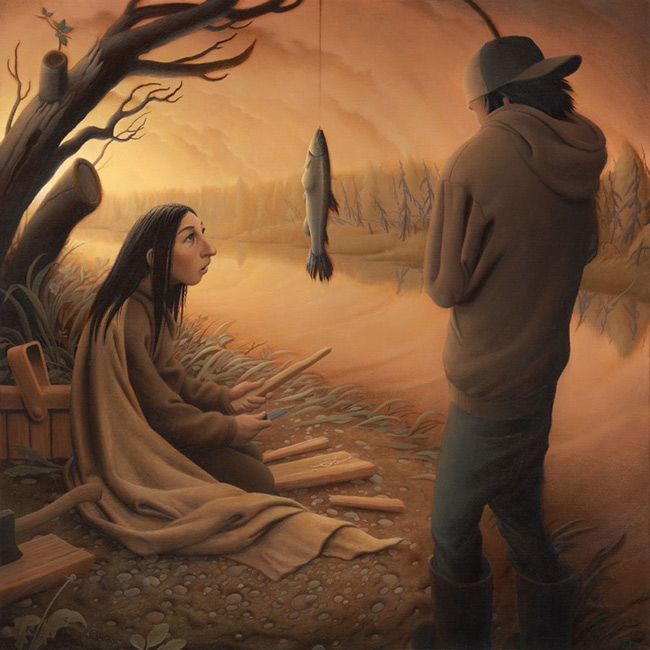
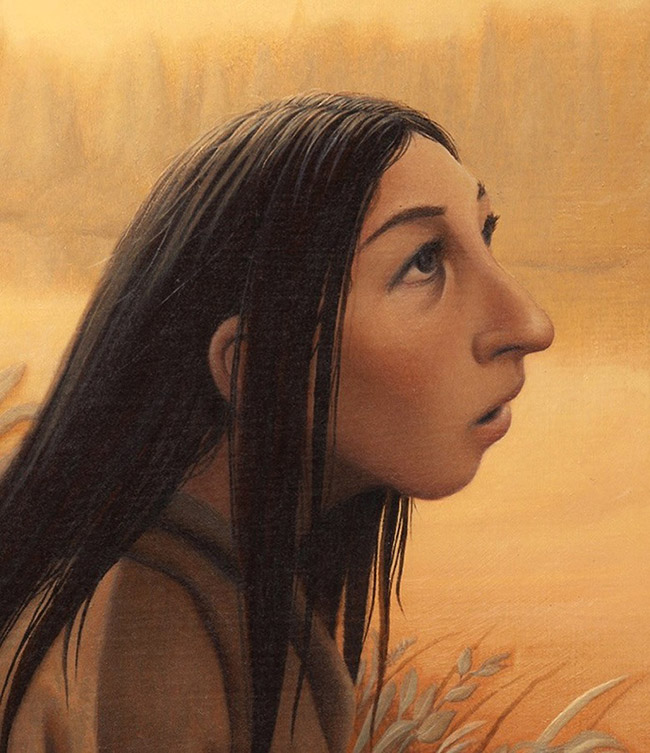
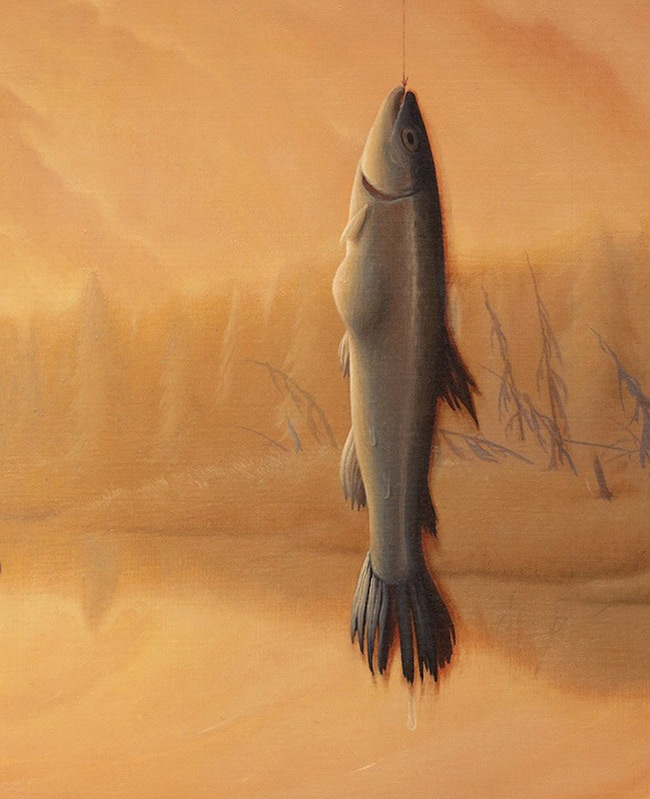
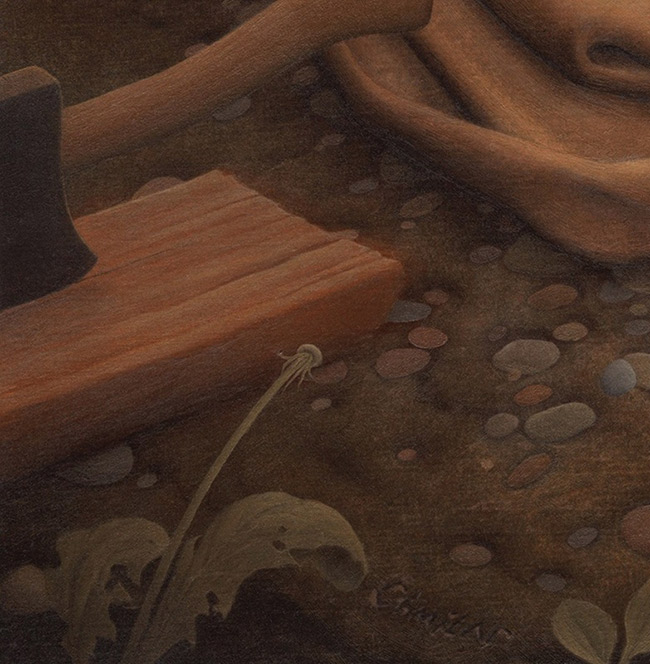
How important do you feel your subconscious is to your creative process? Do you have any practices or habits that encourage creative ideas to rise to the surface?
Subconscious or unconscious thoughts are far faster than conscious thoughts so I think that is where most sparks come from for everyone. I read a book called ‘The Power of Your Subconscious Mind’ by Dr. Joseph Murphy when I was about fifteen. It gave me the confidence to think outside of and transcend my current environment. Speaking of books and such, I have to nab this opportunity to insert one of my favourite quotes: “culture is the cumulative labours and achievements of exceptional individuals transcending their current cultural context” – Hippolyte Taine (1828-1893).
In terms of habits, I feel lucky to not really need any ritual to get me in the mood to make art. I am addicted to creating so when domestic life duties are out of the way, I’m always ready to go. I should say though, that I think a healthy lifestyle makes it far easier to create for long hours. The mind / body connection is key. I would suggest exercise to anyone struggling with a creative block. Blood flow happens in the whole body and therefore the brain. Ideas flow at the speed of circulation, in cycles of rest and nourishment.
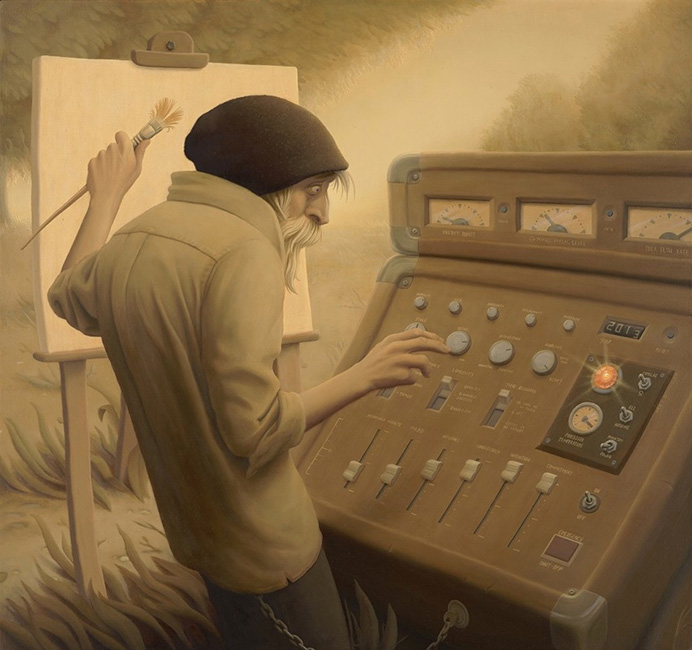
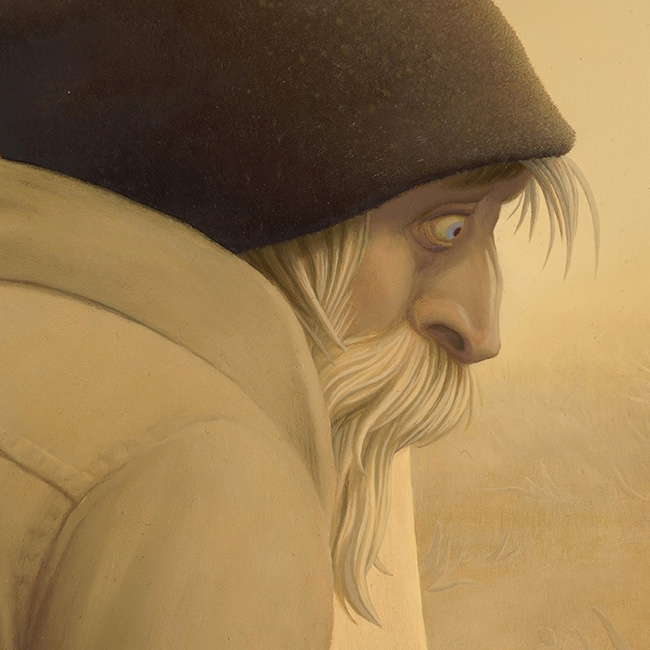
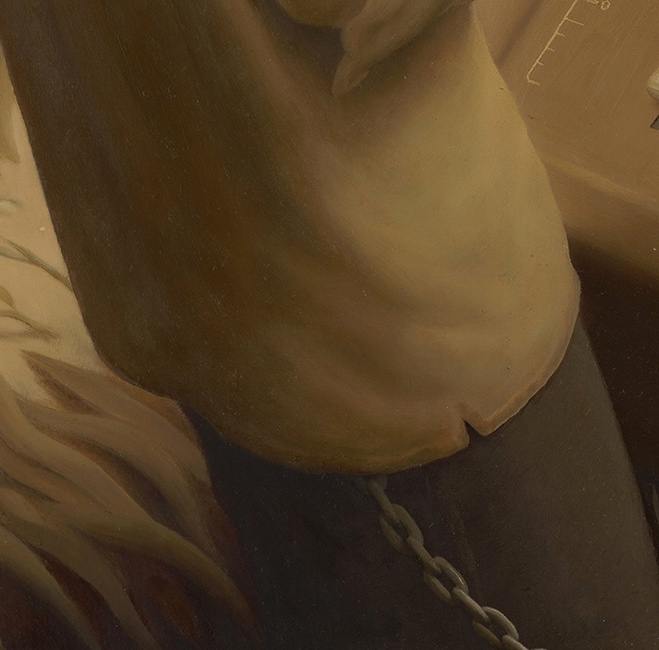
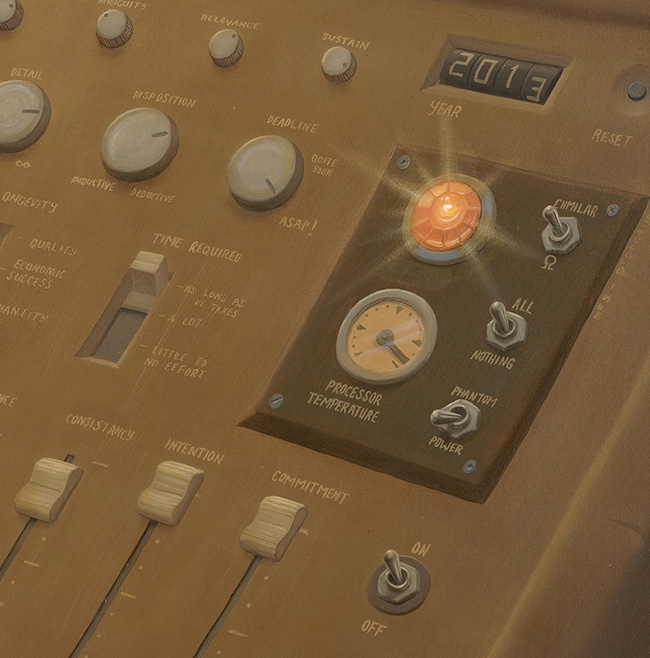
Why do you think that painting is still managing to stay relevant, irrespective of many critics and academicians proclaiming its death over the years?
Another huge question. Because, in short, people (supporters / collectors) have shown so much appreciation for what it represents: the importance of the connection between the body and the mind in terms of expression, and the creation of a single unique artifact. If we become brains in a vat someday (hopefully not), then only at that point would painting die because we wouldn’t have limbs to do it. But then!… people might do virtual painting inside their brain vats, trying to replicate our current state of reality in their super hi-tech VR headsets. It is silly to think of this, and for that reason, I think it is important to realize we already exist in the ultimate VR. An original painting is an infinite mega-pixel resolution image complete with weight, unwanted surface dust and smell.
I think there are many directions to go with this question/answer so I will explore another direction that is meaningful to me: Take for example the question: why paint when you could use a computer? (though I do use a computer for the first creation stages). To that I might say, “why do anything”? Why not cut corners when we can, and where do we stop? To the point where there are no corners at all and then it becomes a different thing altogether. I mean, it goes back to what I said about no art piece having everything at once. It is not possible for a digital print to be perceived the same way as an original painting. If I hated painting and wanted to get it out of the way so that I can go and do what I would rather be doing, I would find other ways. It happens to be that I enjoy painting and its infinite challenges. If my life goal was to sit on a beach and drink mojitos, I wouldn’t have gotten into art in the first place. Purpose requires doing, and painting requires a lot of doing.
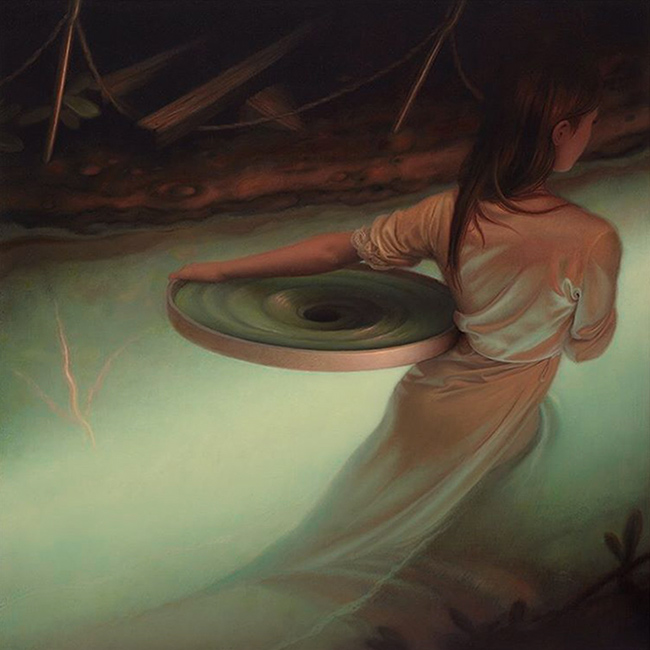
In order to get a better understanding of the personality of an artist, it can help to get a peek behind the curtain. Would you be willing to share a story from your own life, one which you feel has contributed to shaping the person and therefore the artist you are today?
When I was about nineteen, I went to work with my father in the farthest north west corner of Alberta by a tiny town called Zama. For three weeks straight, we woke up at 5 am to spend twelve hours in the freezing cold. The toque that I brought was insufficient for insulating my sensitive ears from icy wind. We were using a portable water boiler to pull geophones (vibration sensors attached to 20 foot long cables) out of the permafrost terrain. The gloves that I brought were not insulated enough to adequately protect my hands from the heat of the steaming wand.
I remember a specific moment when we were standing in the middle of a frozen lake (that was cracking from the weight of our boiler vehicle). My ears and face were freezing from the wind, while my hands were uncomfortably hot from the steaming rod. I couldn’t wait to get back to civilization. The thought of writing music indoors with friends felt like a million miles and years away at that moment. Many experiences like that in my youth, have made me appreciate the opportunity to make art. If I ever have to paint many hours per day consecutively to meet a deadline (which seems to happen constantly), I remind myself of what it feels like to work in those environments.
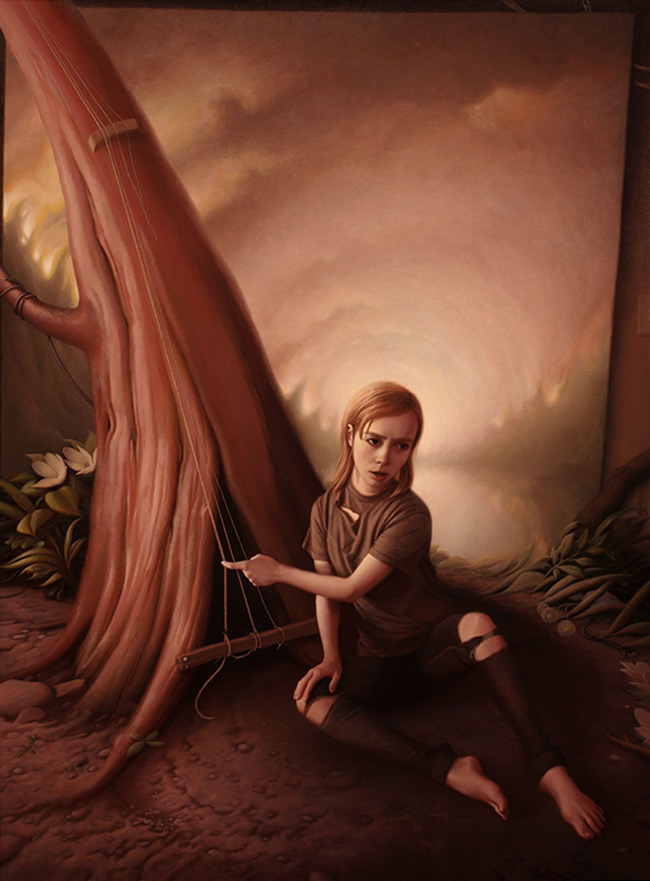
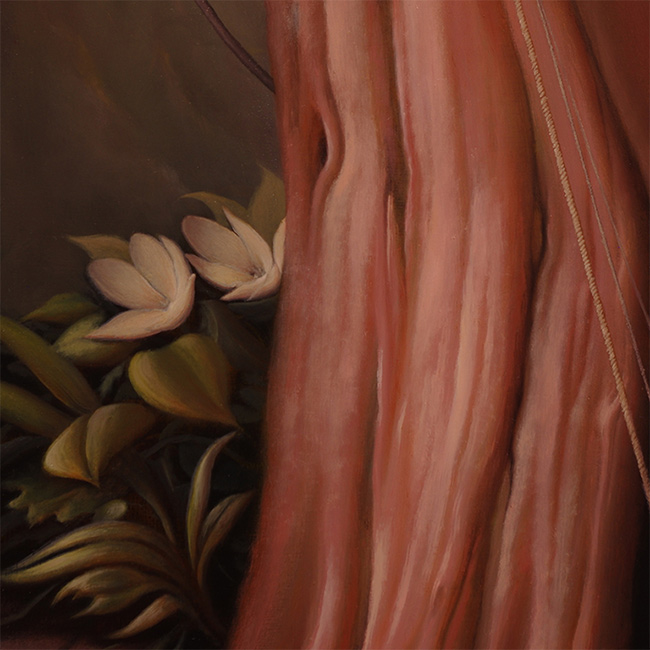
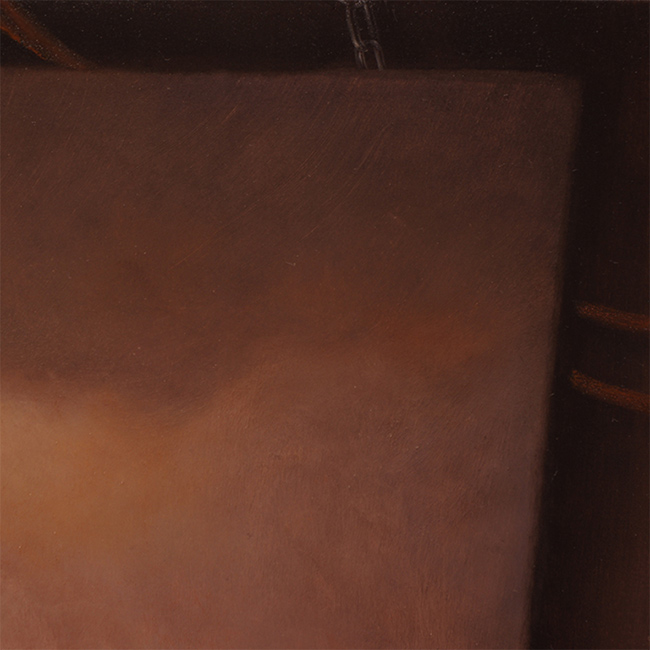
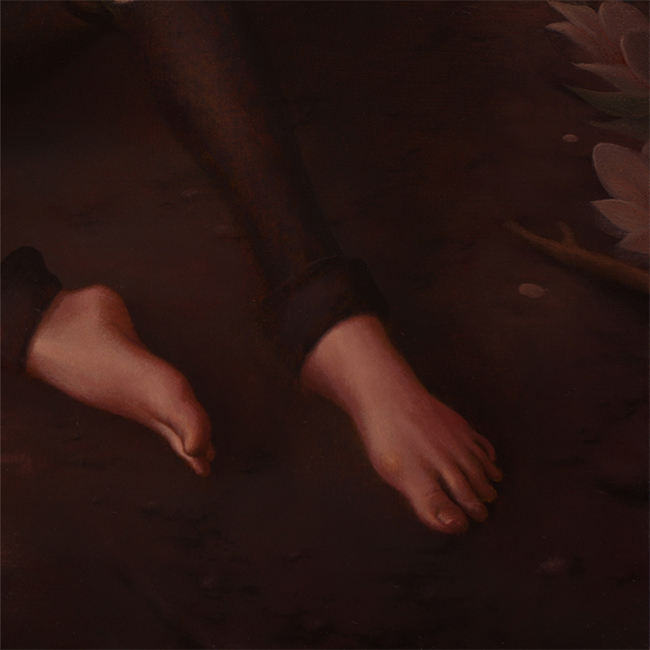
If you could own one piece of art from the world’s collections, what would it be and why?
Um… to rush that choice, I’ll go with ‘The Census at Bethlehem’ by Pieter Bruegel. I ordered a print of that one online when I started painting. When I got it, I realized it was the copy that his son had painted – blatantly obvious upon closer inspection. They mistakenly labelled it by Pieter Bruegel the Elder. I love his aesthetics, shapes of forms and colours. My first love of the old masters so I have to go with that one.
What’s next for Steve Chmilar?
I’m very excited about new ideas that I have. They will involve making models of miniature sets and props to use as references, which is a lot of work but worth it. I plan to show the models and props along with the paintings because I’ve found that people really appreciate process. I look to do at least one show in Toronto this year, stay tuned for info.
